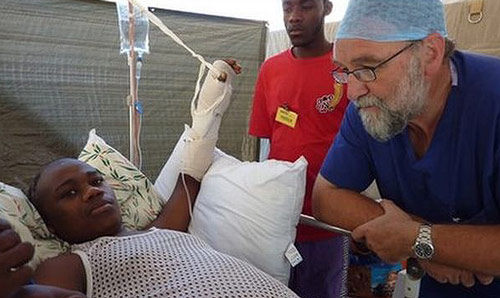A review of post earthquake surgical interventions in Haiti and post surgery rehabilitation needs
This is a joint investigation between HCRI and Handicap International funded by the UK Department for International Development (DFID).
The investigation consists of a qualitative and quantitative evidence-based study of surgical procedures and related rehabilitation interventions performed by national and international responders following the 2010 Haiti earthquake.
Research findings

Surgical and rehabilitation data were requested from medical response agencies to provide the timing and nature of all wound interventions, recognising that timing, simplicity of wound management and integration of care might have a profound effect on the final outcome of injury in such settings.
Interview responses
Interviews of Haitian amputees were conducted by a Haitian national to elicit their access to, and corresponding perception of, the medical care they received with recording and subsequent translation in Manchester.
The research revealed:
- The high proportion of lower limb especially compound fractures
- Frequent lack of individual surgical record keeping, or compilation of surgical lists initially
- Lack of discharge planning and coordination, especially regarding wound care and prosthetic fitting and the rehabilitative care provided.
- Large variability in surgical approach and quality of surgical outcomes
It also revealed the surgeons dilemma in dealing initially with severe limb injury in an environment where subsequent access to care may be limited, and where untreated tissue damage and infection may be fatal.
Multi-agency implications
The results indicate that with multi-agency response in this scale of disaster there is a critical need for pre-planning of surgical, post operative nursing and rehabilitation teams using registers, integrated trauma protocols and proforma to facilitate continuity of care within and between agencies - from triage through rehabilitation and discharge into the community.
These would also aim to facilitate better documentation, evaluation and future refinement of trauma response in disasters. Where wounds are such a significant public health burden, new initiatives such as information and leaflet campaigns on wound management, dressing care and red-flag signs should be considered.
